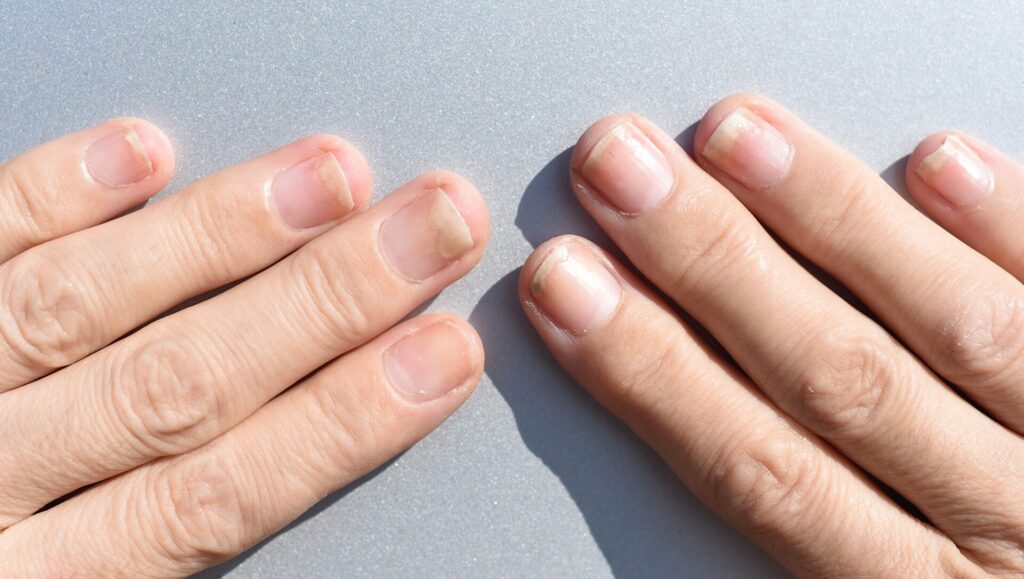What is Nail Psoriasis? Its Symptoms and Causes
Nail psoriasis, also known as psoriatic nail dystrophy, is due to psoriasis involving the nail matrix or nail bed, resulting in specific and non-specific clinical changes in the nail. It normally affects several digits (fingers and toes) and is more common on the fingernails than the toenails. Pain and tenderness from nail psoriasis can impact daily activities.
It affects 90% of patients with chronic plaque psoriasis at some time in their life. It is more common in adults with a prevalence of up to 80%, compared to children in whom it has been reported in 7–13%.
Psoriatic nail disease may be a risk factor the development of psoriatic arthritis and is often associated with prolonged severe cutaneous psoriasis.
This condition can affect all races and age groups, and both sexes, although a male predominance has been reported in one large case series.
Nail Psoriasis Symptoms and Signs
Someone might notice the following signs with psoriatic nails:
- Clear yellow-red nail discoloring that looks like a drop of blood or oil under the nail plate
- Little pits in the nails or pitting of the nail matrix.
- Lines or furrows going across the nails (side to side rather than root to tip)
- Areas of white on the nail plate, otherwise known as leukonychia or midmatrix disease
- Thickening of the skin under the nail.
- Loosening of the nail (nail lifting)
- Crumbling of the nail
- Tiny black lines in the nail in tip-to-cuticle direction.
- Redness of the pale arched area at the bottom of the nail.
- Arthritis of the fingers with nail changes.
Causes of Nail Psoriasis
Psoriasis is a multifactorial systemic disease including inflammation and epidermal hyperproliferation.
Nail psoriasis can involve the nail bed, nail matrix, hyponychium, and nail folds.
Theories include:
- Activation of the antimicrobial peptide LL-37 by Candida and the cytokine overflow theory
- Increased expression of interleukin(IL)-10 in the affected nail bed compared to downregulation of IL-10 in psoriatic skin lesions
- Koebnerisation of psoriasis in onychomycosis or nail trauma.
Are you suffering from this condition? One of our podiatrist can assist and then recommend what treatment options are best to get you back on track. ✅
Schedule an appointment here or you may call us at 44 (0) 207 101 4000. 📞
We hope you have a feetastic day! 👣☀️
-The Chelsea Clinic and Team




